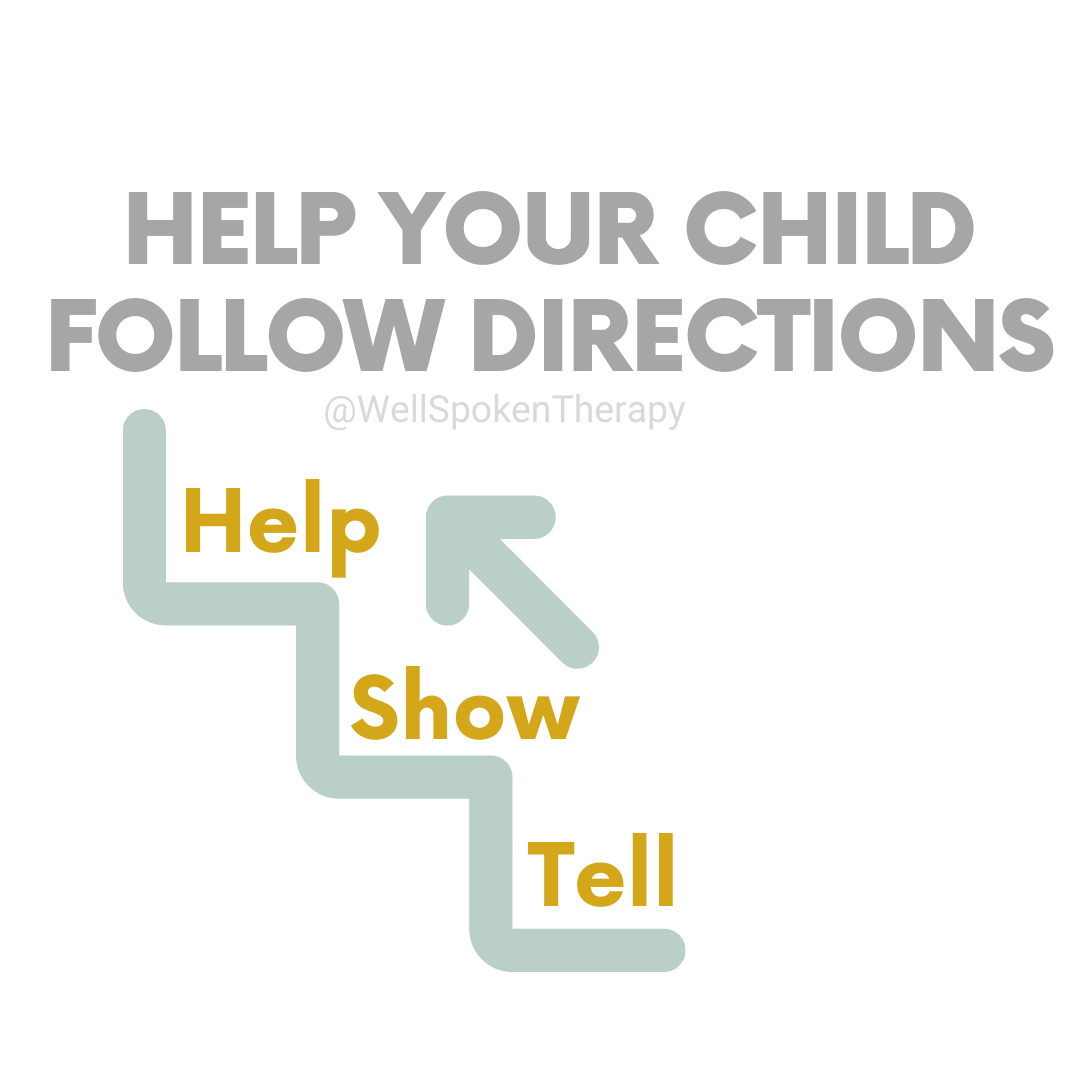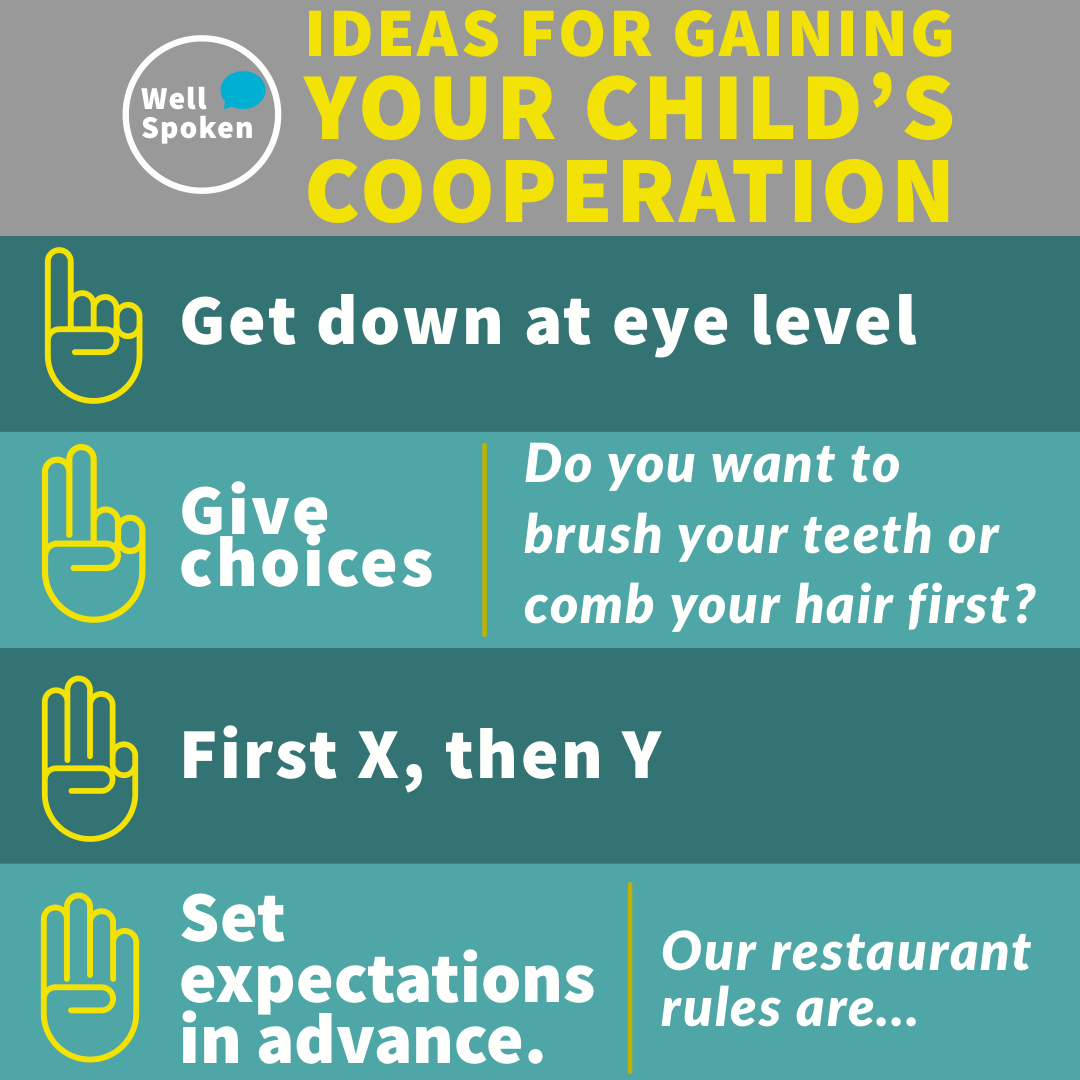|
Have you ever wondered, is my child ignoring me or are they not understanding what I’m saying? If so, this post is for you!
The brilliant Laura Mize recommends this gem of a strategy to help children follow directions, regardless of the reason they’re having trouble. How to: ⭐️First, TELL your child: “Get your shoes.” ⭐️Then, SHOW your child: Point to the shoes + say “Get your shoes.” ⭐️Last, HELP your child: Guide your child’s hands to pick up the shoes + say “Get your shoes.” Notice how we start with the least amount of help and only add more assistance as needed. Try this strategy out and let me know how it goes! As a graduate student, my first therapy sessions with preschoolers were an utter failure. Picture children rolling on the floor, crawling under tables, and acting silly when it was time to work. To say I felt exasperated and helpless would be an understatement. Before these preschoolers could work on their speech and language skills, I needed their cooperation. But, how?
Here are a few pointers I learned from skilled mentors, my own research, and trial and error. Not only do these approaches work well in the therapy room, I later discovered these strategies worked magic at home with my own young child. Whether your child has a language delay or not, try these five strategies to encourage the little one(s) in your life to cooperate. 1. Eye Level Getting down to your child‘s eye level is a non-verbal way to say - we’re in this together. Also, it helps your child focus his/her attention on what you are saying. 2. Choices This is an ideal technique for children who are natural leaders or who like to be in control. Use this strategy to create a win-win situation. Your child wins by feeling empowered. S/he gets to pick what happens first. You win because the job gets done. Here's what it looks like: If your child has to brush teeth and put on shoes before heading out for the day, it doesn’t really matter in what order that happens as long as it gets done, right? You might say: What do you want to do first? Brush teeth or put on your shoes? 3. First X, then Y Thanks to the simple, succinct language used, this strategy is particularly helpful for children with language delays, or those in the early stages of language development. When possible, try pointing to what you are talking about. This gives added visual support to early communicators, who might not yet understand the exact words you are using. Here's what it looks like: Say your child is upset because he wants a cookie before dinner. You might say: First dinner (point to dinner plate), then cookie (point to cookie). Say your child refuses to clean up before going to the park. You might say: First clean up (point to toys), then park (point to door). 4. Set Expectations in Advance. Talk to your child BEFORE entering a situation. Why? Because you're more likely to get your point across when everyone is calm and less distracted. Let your child know in simple terms what is expected. It’s much easier to set expectations beforehand, than it is to reel back a situation gone off the rails. Here's what it looks like: Before entering a restaurant you might say: Our restaurant rules are - stay in your chair and say please/thank you. Before a play date, you might say: When we play with friends, we will use gentle hands and take turns. 5. Use a Timer For young children, who do not yet have a firm understanding of time, a sand timer or phone timer is your best friend. A timer provides a visual representation of how long something will take. Here's what it looks like: For the preschoolers struggling to transition between tasks, you might say: The timer is set for one minute. When it goes off, it's time to [insert task here]. For the child who is reluctant to engage in a less preferred task, you might say: We're going to [insert task here] for XX minutes, then we'll take a break. For the child who needs help focusing: The timer is set for 5 minutes, let's see if you can get dressed before the timer goes off. Do these strategies work every time? No. Do they work much of the time? Yes. As a Speech-Language Pathologist or parent, it helps to have a variety of behavioral tools in your arsenal. What works one day, might not the next. I'd love to know: What are your go-to strategies with your child? |

